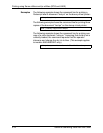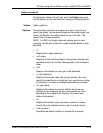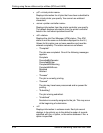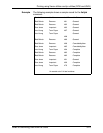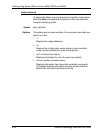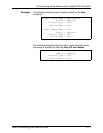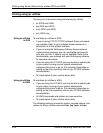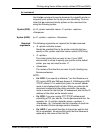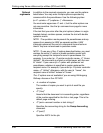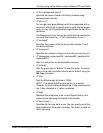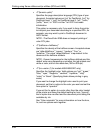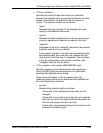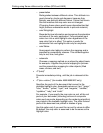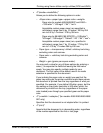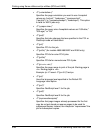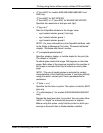
Printing using Xerox utilities and lpr utilities (DOS and UNIX)
3-20 Guide to Submitting Jobs from the Client
Optional
arguments
In addition to the required arguments, you can use the options
listed below. You may enter multiple options separated by
commas within the parentheses. Use the following syntax:
lpr
-P <printer> -C”(<options> )” <filenames>
You must enter uppercase -C and -J, but the other options are
not case sensitive. Use the lpr command man page for more
information.
If the text that you enter after the print options (shown in angle
brackets below) contains spaces, enclose the text with double
quotation marks.
NOTE: The quotation marks prevent the parentheses and any
spaces from passing to UNIX as separate entities. UNIX
interprets spaces as the end of a command line and acts on
them if they are not enclosed in quotation marks.
NOTE: To use any of the -C options described below, you must
enclose the entire -C option in double quotation marks with
everything except the recipient’s name in parentheses. For
example, if you enter lpr -P<printer controller name> -C “Jones
(drilled)”, the document is printed on drilled paper with the user
id “Jones”. If you use an lpr -C option with quotes but not
parentheses, whatever is specified in quotes replaces the
recipient name. For example, if you enter lpr -P<printer controller
name> -C “drilled” <filename> with the user id “Jones”, the
recipient name is“drilled” instead of “Jones.”
The -C options are not available if you are using Wollongong
Pathway Access or Sun PC-NFS.
• -# <number of copies>
The number of copies you want to print of each file you
specify.
•-C“(1ton)”
Asserts that the document is in ascending order, regardless
of the number specified for the first or last page. This is the
default page ordering.
• -C“(acct=<account number or text string>)”
Specifies the accounting string for the
Dump Accounting
command.
• -C“(ascii)”
Specifies ASCII for the job.



